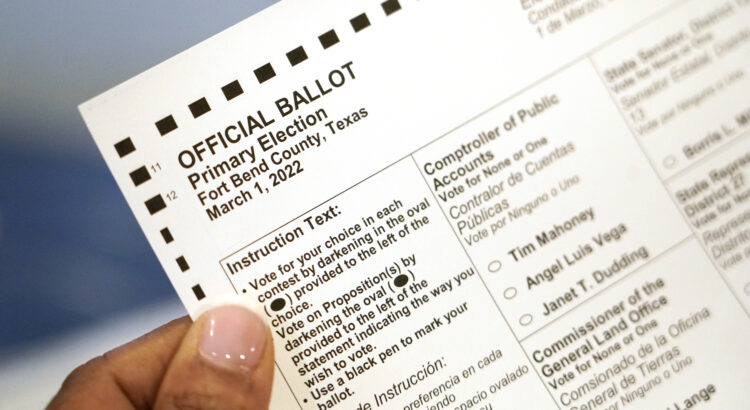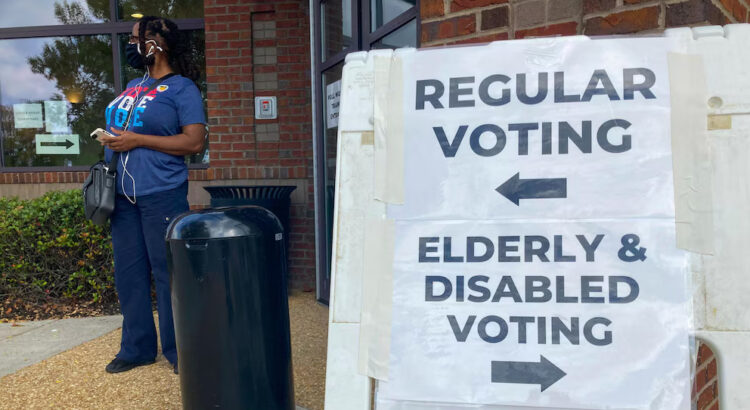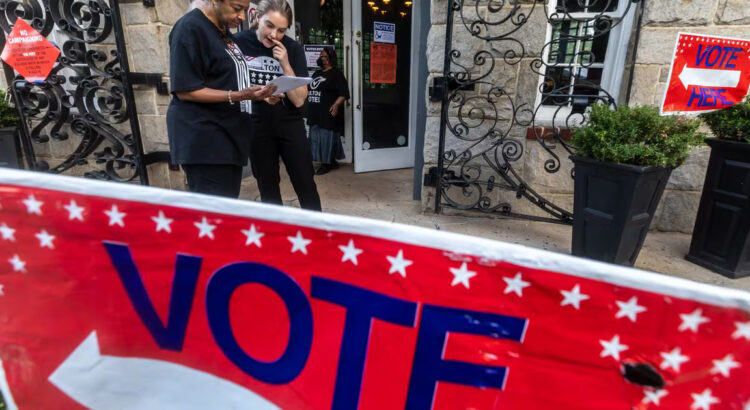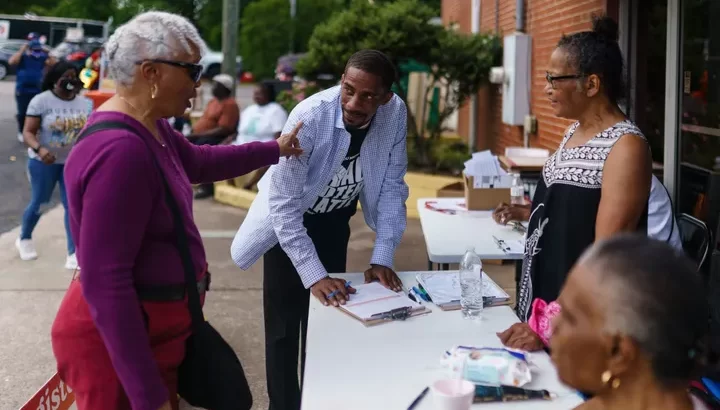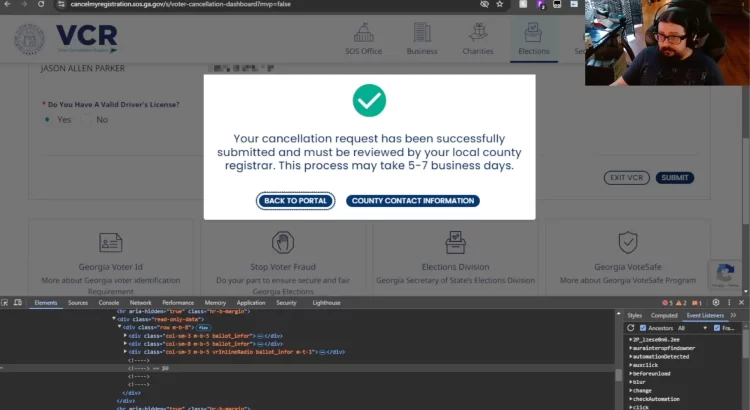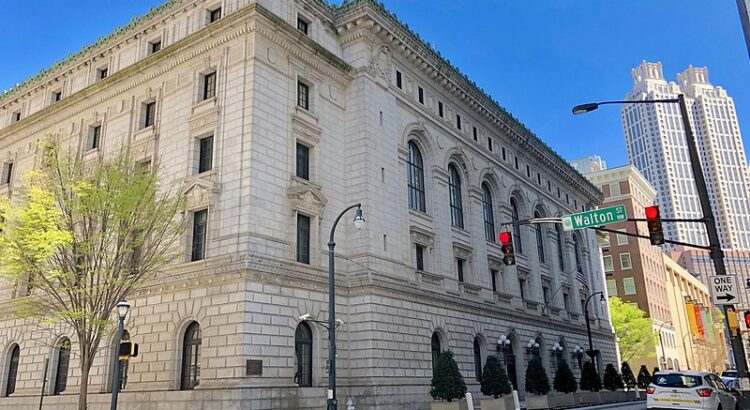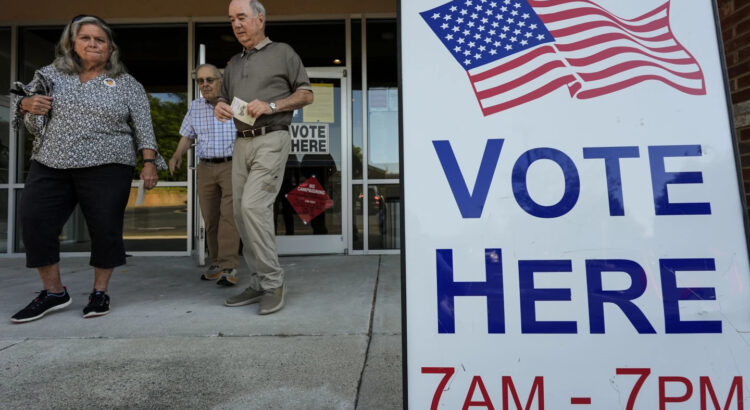The rule, which was pushed by nationally prominent election deniers, only changed in minor ways between being voted down in May and approved in August. Those adjustments made it even less compliant with existing law, experts say.
by Doug Bock Clark Aug. 27, 5 a.m. EDT
The members of the Georgia State Election Board could not have been clearer. Back in May, four of them voted down a proposed rule that would have given county election boards a new way to delay or reject election results, which could throw the November vote count into chaos.
“You run counter to both the federal and the state law,” said Ed Lindsey, a Republican board member and attorney who practices election law, to the woman who proposed the rule.
This rule “violates federal law. It also violates state law,” said Sara Tindall Ghazal, the board’s lone Democrat.
“It’s just not ready for prime time yet,” said the board chairman, noting that it needed more work to ensure its legality.
Even the lone board member supporting the rule, Janice Johnston, a retired obstetrician who had made unvalidated claims about falsified vote tallies in Fulton County, voted against it. The fifth board member did not vote. The board agreed that two members would work on improvements to the rule.
Three months later, a new draft of the rule came back for a vote. This time, it passed 3-2.
How much did the rule change between drafts? A review by ProPublica shows: hardly at all. In fact, election law experts told ProPublica that the small changes made the rule even less compliant with existing law.
The rule dramatically expands the authority of county officials overseeing the usually mundane task of certifying elections. The passage of it was enabled by nationally prominent election deniers and the Georgia Legislature. And the board members who passed it were cheered on by former President Donald Trump. It comes at a time when Trump and his allies are already calling into question the fairness of the elections process and making preparations to contest the results — and as Trump slips behind Vice President Kamala Harris in swing state polls.
It’s no coincidence that Trump allies are expanding their powers over certification in Georgia, a state where Biden beat Trump in 2020 by fewer than 12,000 votes.
Weeks after that election, Trump called Georgia Secretary of State Brad Raffensperger and asked him to “find” him those winning votes. Raffensperger refused. Since then, the Legislature has made numerous moves to exert more control over the state’s elections.
In the 2021 legislative session, lawmakers stripped Raffensperger of his spot as the designated chair of the State Election Board. Instead, they gave themselves the power to appoint the chair, unless they were out of session, in which case the governor could do it. (Though they could replace that chair once they were back in session.)
Another of their changes came this past May, after Lindsey, the Republican board member who had called the rule illegal, was pressured to resign. The Republican speaker of the House replaced him with Janelle King, the former deputy state director for the Georgia Republican Party and a conservative media personality, who has no experience in election administration and who had tweeted “I have questions!!” about the results of the 2020 election.
With King, the board became stacked with a majority of members who had questioned the results of the 2020 election. In early August, Trump praised all three by name during an Atlanta rally, calling them “pit bulls fighting for honesty, transparency and victory.”
Meanwhile, the proponents of the rule — including Bridget Thorne, a Republican Fulton County commissioner who calls herself the rule’s “originator” — decided to resubmit it. Thorne told ProPublica that claims of the rule’s illegality were an attempt to “scare” her. “I went and I talked to the lawmakers,” she said, “and they didn’t see anything wrong with my rules.”
Thorne said she got advice and support on the revised rule from Hans von Spakovsky, a Heritage Foundation lawyer who has led efforts for stricter voting laws nationwide for decades; Ken Cuccinelli, a former Virginia attorney general and the chairman of the Election Transparency Initiative, a group advocating for Republican priorities in election law; and Cleta Mitchell, the head of the Election Integrity Network, a nationwide organization that has challenged the legitimacy of American elections, which secretly backed the submission of the rule. Mitchell had joined Trump on the call in which he asked for Raffensperger to find him votes.
Mitchell, von Spakovsky and Cuccinelli did not respond to requests for comment.
The resubmitted rule only changed in minor ways between being voted down in May and approved in August. Those changes did not fix its legal problems, according to five election law experts who spoke with ProPublica. In fact, they said, in some ways it made them worse.
At the heart of legal experts’ critiques of the rule is its assertion that officials have the discretion to delay certification, even though more than a century of Georgia case law and judicial history says otherwise.
“If the State Election Board decided that the first rule was outside the role of their authority, I think the second rule is even more outside the scope of their authority,” said Caitlin May, a voting rights attorney for the American Civil Liberties Union of Georgia.
The only substantial addition was a new paragraph that gives county election boards the power to determine “a method to compute the votes justly” if they discover any error or fraud, while also requiring that a board report fraud to the district attorney. Legal experts worried that some conservative county boards might interpret this as permission to adjust vote counts they perceived as tainted, given that the rule doesn’t define what it means to “compute the votes justly.”
Georgia law states, “If any error or fraud is discovered, the superintendent shall compute and certify the votes justly, regardless of any fraudulent or erroneous returns presented to him or her.” (Italics added by ProPublica.)
Peter Simmons, a lawyer for Protect Democracy, a nonprofit that works to protect the integrity of American elections, said that by dropping “and certify” from the rule, its meaning has arguably been reversed. Instead of emphasizing that certification is a mandatory duty regardless of any fraud or errors, the rule tries to grant county election board members discretion not to certify by leaving out the language that they “compute and certify,” according to Simmons.
“This rule’s slight change in wording from the statute could have significant effects” and could “jeopardize Georgia’s ability to comply with the federal certification deadline,” Simmons said.
There also was a minor adjustment to the May version of the rule, which would have required that county boards meet on 3 p.m. the Thursday after the election to investigate potential errors. After criticism from Georgia election officials, among others, that the timing of such a meeting was well ahead of the 5 p.m. Friday deadline for counting provisional ballots, the August version of the rule moved the timing to 3 p.m. on Friday. But experts warned that the later timing still could cause provisional ballots to be missed.
Johnston had voted against the rule in May and for it in August. She was joined by Rick Jeffares, who did not cast a vote in May, and King.
In the August meeting at which the vote was held, Johnston argued that certification should be discretionary not mandatory, but she offered little explanation of her reasoning for supporting it after she previously voted it down, except to say that the change to the timing of the investigatory meeting had eased her concerns.
When asked why she had changed her vote, Johnston emailed ProPublica, “The small changes were appropriate.”
Jeffares and King did not respond to requests for comment.
